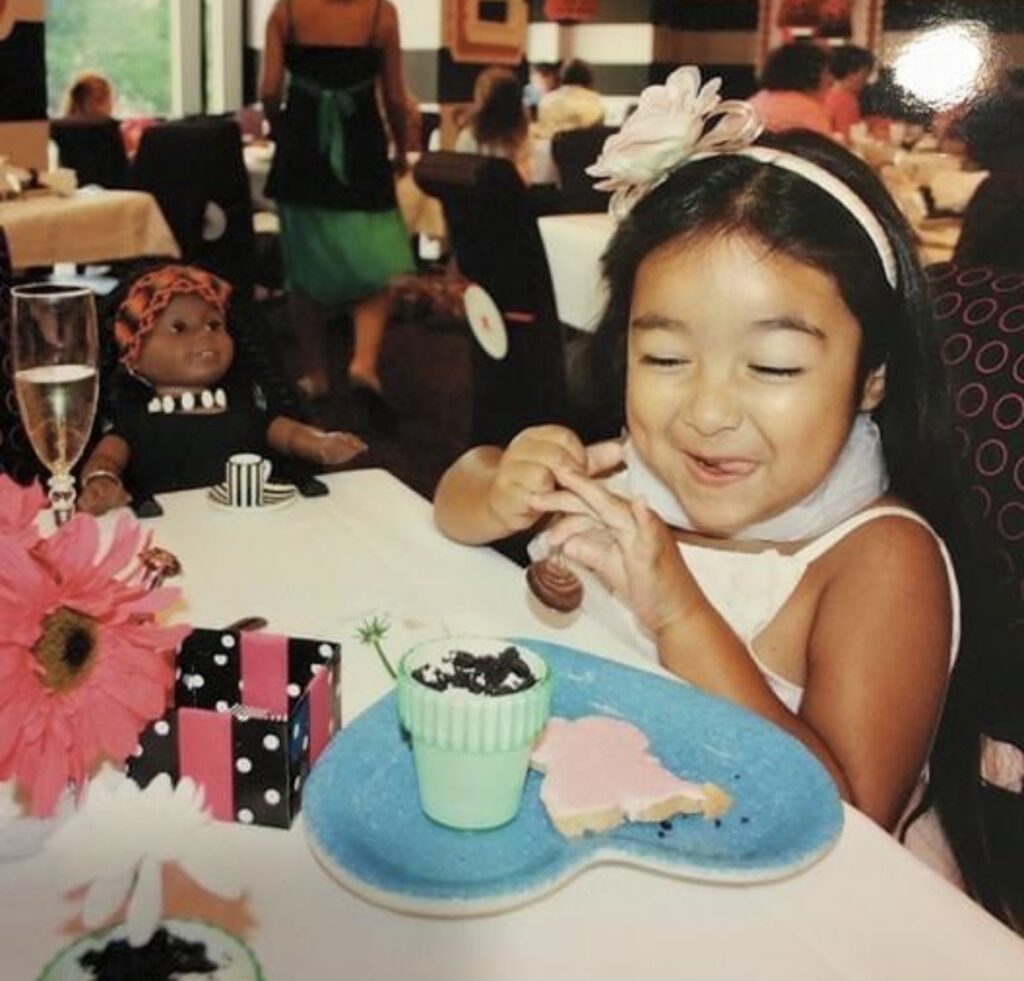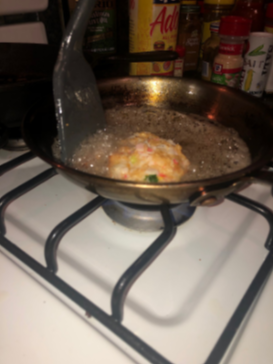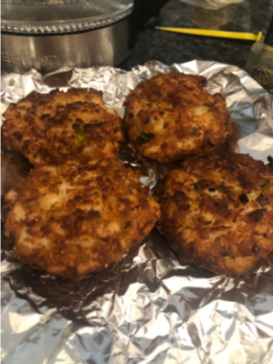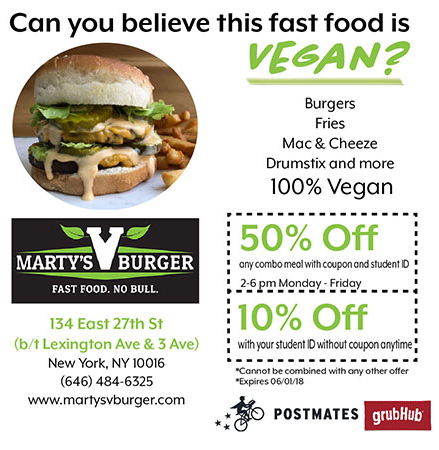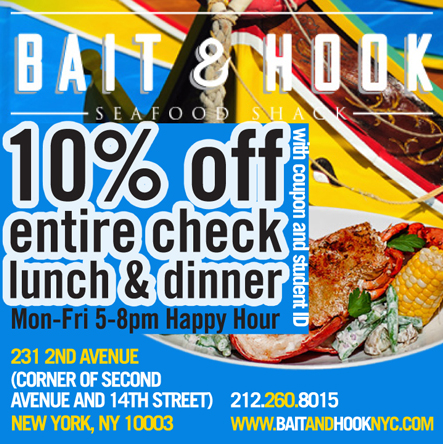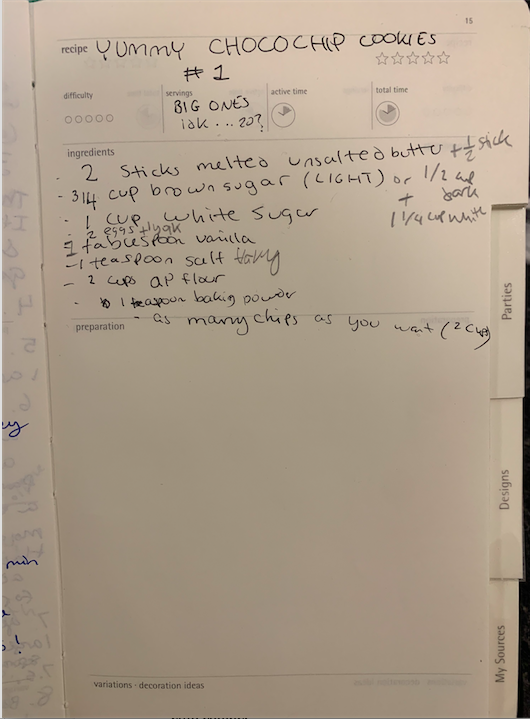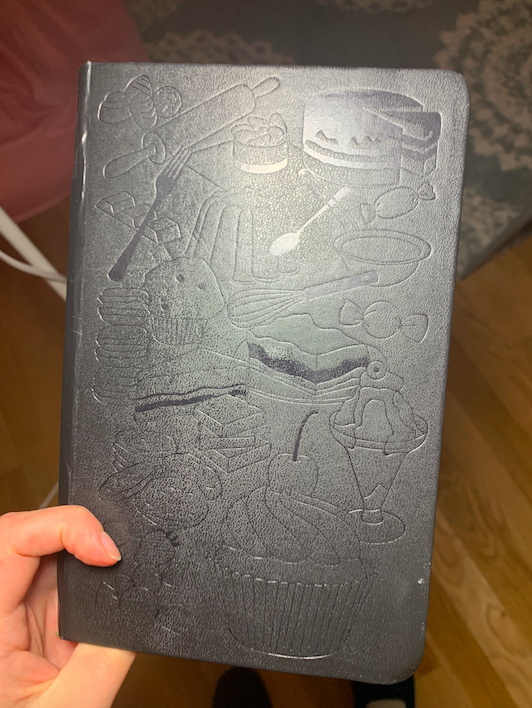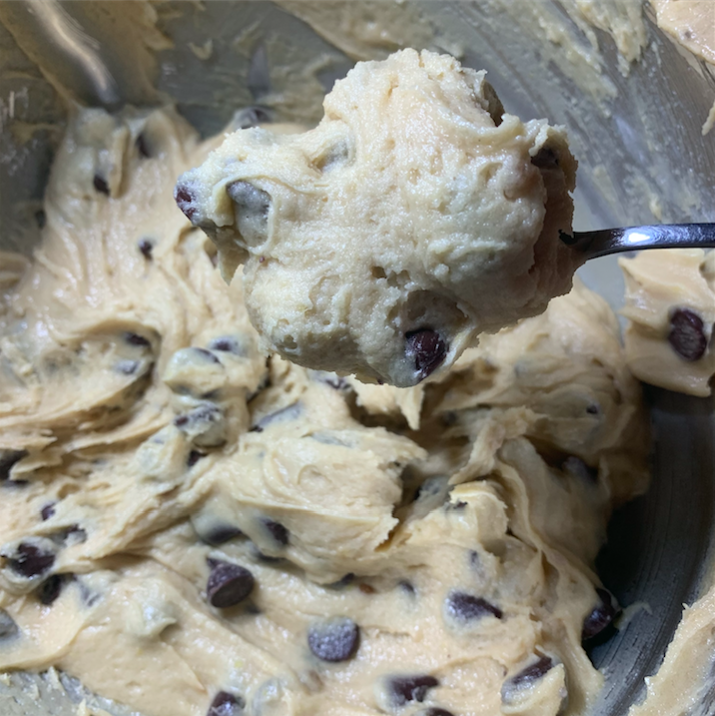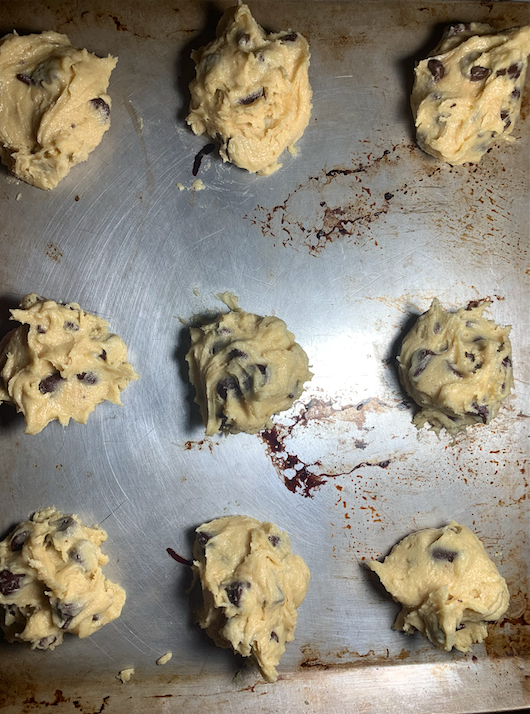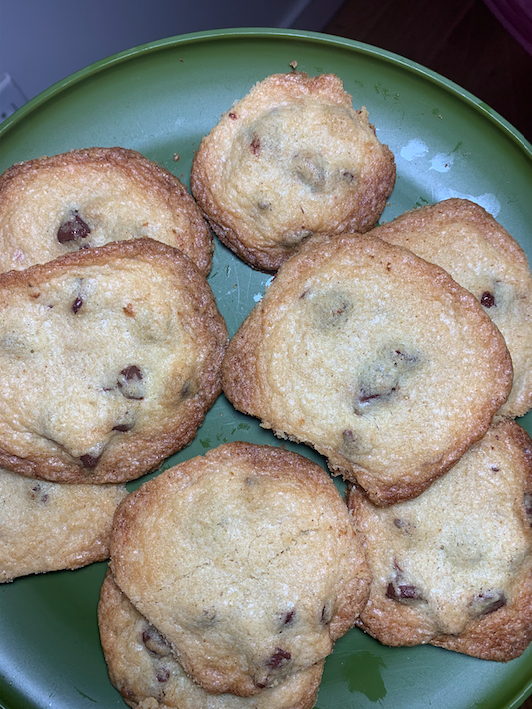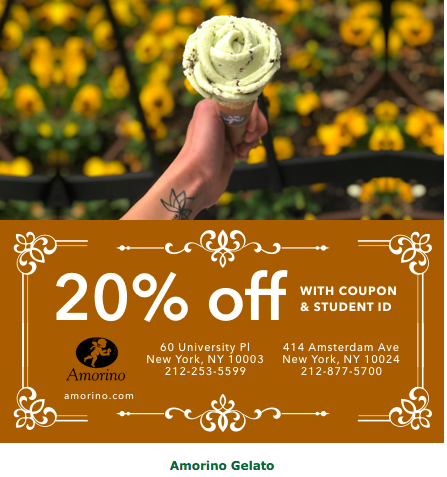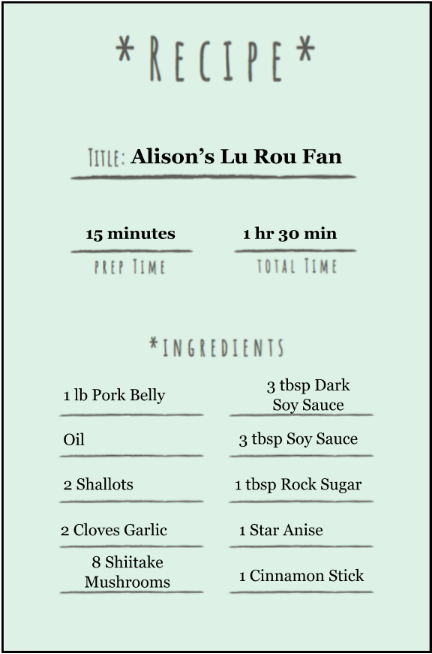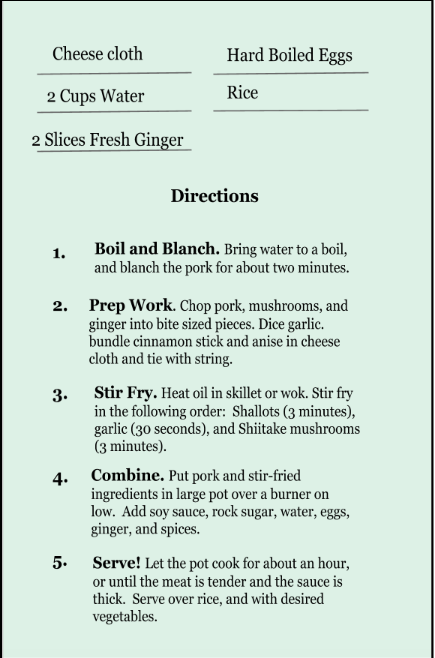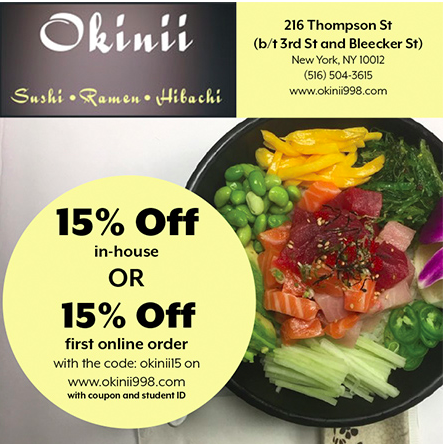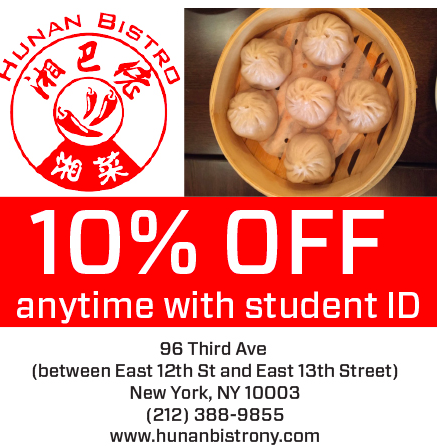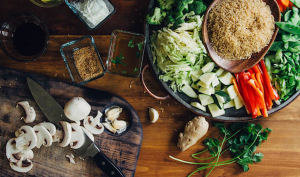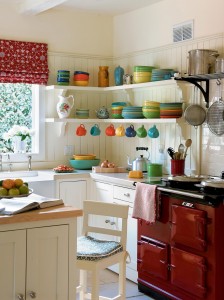My boyfriend and I have started a tradition of cooking over Facetime once a week together. We’re currently long distance so this is a nice way to spend time together and it helps him get more comfortable in the kitchen. We’ll spend the previous night picking out a recipe, go and get the ingredients, and then hop on Facetime to cook the meal together. However, my boyfriend is not super comfortable in the kitchen yet. This has led to several hilarious mishaps. One of the first meals we cooked together was orange chicken. My boyfriend was struggling to get his sauce to thicken so, as the recipe suggested, he kept adding more cornstarch. Suddenly, I saw him freeze and a look of mild horror started to blossom on his face. “Babe,” he whispered, “I think I’ve been using corn syrup instead of cornstarch.” I couldn’t help but burst out laughing, and he soon followed suit.
Food can be such an important part of life, far beyond our dependence on it to keep living. It has become a centerpiece for social events. I can’t tell you the amount of times the words “free food” have gotten me and my friends to go to an event that we otherwise would not have considered. Food is used as an excuse to see people and catch up – “going out for lunch” or “getting coffee” are often used to suggest a reason to hang out with someone. It can help build memories and strengthen relationships, like my boyfriend adding copious amounts of sugar instead of a tablespoon of dry starch. In America, we have whole holidays that center around the food being eaten at them. Thanksgiving is pretty much just an excuse to eat way too much with your family, and I don’t think anyone is in any rush to change that. On top of its importance to our physical health, food has a huge social aspect to it.
While food’s impact on our social and physical wellbeing are, for the most part, common knowledge, few people consider food’s impact on our mental health as well. According to Dr. Eve Selhub in her article “Nutritional Psychiatry: Your Brain on Food”, what people eat and how much of it can greatly impact their brain functions and mood. This is not only because our brain uses the energy from food to run smoothly but also because good food helps the bacteria and neurons in our gut to stay healthy and help neurons send and receive neurotransmitters such as serotonin and dopamine. Essentially, the food you eat can affect your mood and energy levels. If someone eats too much, they might feel bloated or tired. If someone eats too little, they won’t have the energy to do what they need to do in the day. This is especially important for people with depression who struggle with energy levels and mood already. The kind of food you eat can also affect your mood with processed foods causing inflammation and blocking neurons in your stomach from sending and receiving neurotransmitters. Overall, the food you eat has a huge impact on your mental health and vice versa.

I found this out the hard way. I had a pretty good relationship with food until about the end of eighth grade when I started getting incredibly stressed out. This caused me to feel like I was going to be sick every time I ate. I never threw up but I started eating less and less to try to avoid feeling sick. I remember thinking that I would rather be hungry because it meant I didn’t feel sick and I started to enjoy feeling hungry. While this went away halfway through that following summer, the mindset of rather being hungry than sick is still something that I’m trying to get over. In the summer before junior year, I started exercising to try to help my declining mental health. I started doing at home workouts and really getting into fitness. This did help my mental health a little bit but it opened a whole new avenue for hurting my mental health: I started to track my calories. It was pretty harmless at first. I was just curious about how much I was eating and how I needed to change it to fit my fitness goals. However, it quickly became an obsession, with me consistently eating less and less just to see the number on the calorie tracker (and, subsequently, the scale) go down. If I felt like I ate too much that day, I would work extra hard to burn off those calories. I rarely could, and I felt like a failure every time this happened. This is similar to an eating disorder called Orthorexia nervosa. According to NEDA (National Eating Disorder Association) in their article on the disorder, Orthorexia is an obsession with healthy or “clean” eating to the point of damaging someone’s health and wellbeing. This is a very real and serious eating disorder and, while I don’t consider myself as someone who suffered from this disorder, I know I was very close. Luckily, I had friends who knew what was going on and were able to help pull me out of that mindset before it got too dangerous. I was able to forget calorie tracking and, while I still sometimes have the urge to obsessively work out and track my food, I have been able to let it go and start to rebuild my relationship with food.
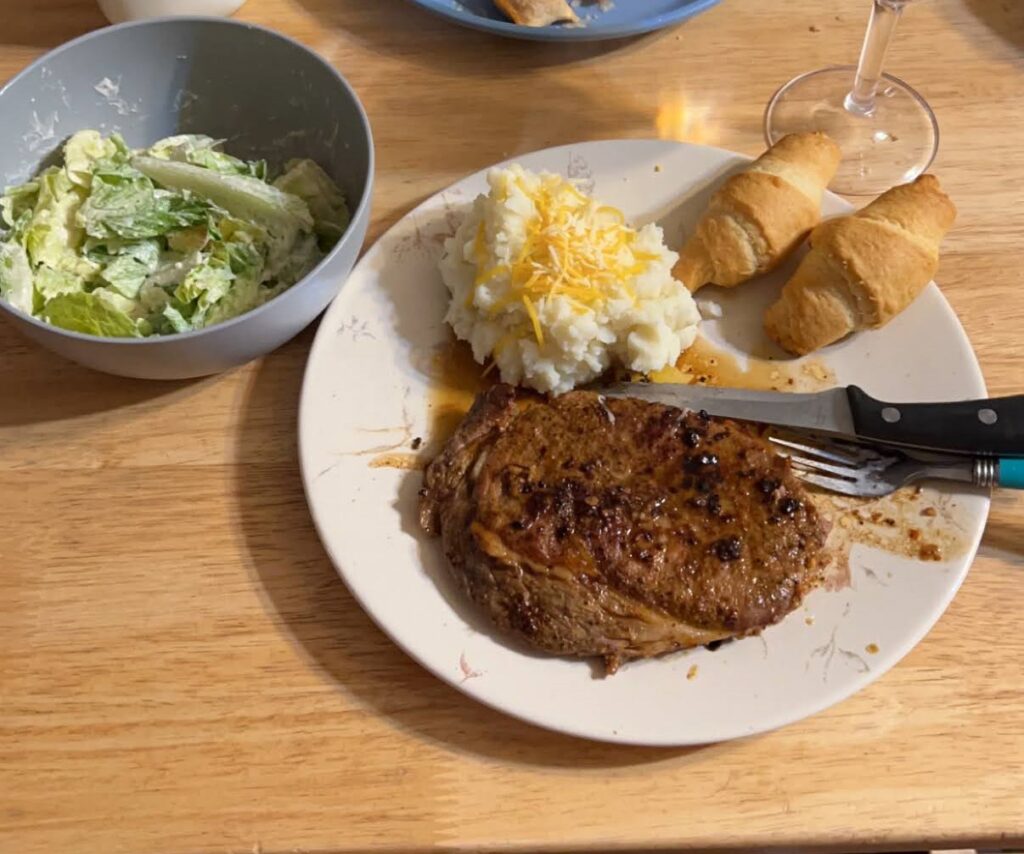
The biggest thing that has helped me overcome this struggle is learning how to cook my own meals. About two years ago, I moved into my first apartment and finally had access to my very own kitchen. It took a little bit to learn what I was doing but I quickly found a joy and passion for cooking. I also found that having more control over my food and knowing exactly what went in it helped me tremendously. I’ve been able to reframe my mindset around food from being solely used to further my physical health to being a fun social activity that helps my whole body function properly. While I’m still growing out of unhealthy mindsets, I have been able to find excitement in searching for new recipes, learning to cook them, and doing it for and with the people I love…even when they add too much corn syrup to an orange chicken recipe!
Takeaway: Food can and should be much more than calories in and out.

By: Callie Hedtke
Callie is going to be a senior at DePaul University in Chicago where she is studying Graphic Design. If she’s not at her computer designing (or playing video games), you can find her in the kitchen trying out new recipes. She also likes to be outside exploring and enjoys hiking with her friends and family.
For over 20 years, the Campus Clipper has been offering awesome student discounts in NYC, from the East Side to Greenwich Village. Along with inspiration, the company offers students a special coupon booklet and the Official Student Guide, which encourages them to discover new places in the city and save money on food, clothing, and services. At the Campus Clipper, not only do we help our interns learn new skills, make money, and create wonderful e-books, we give them a platform to teach others. Check our website for more student savings and watch our YouTube video showing off some of New York City’s finest students during the Welcome Week of 2015.


